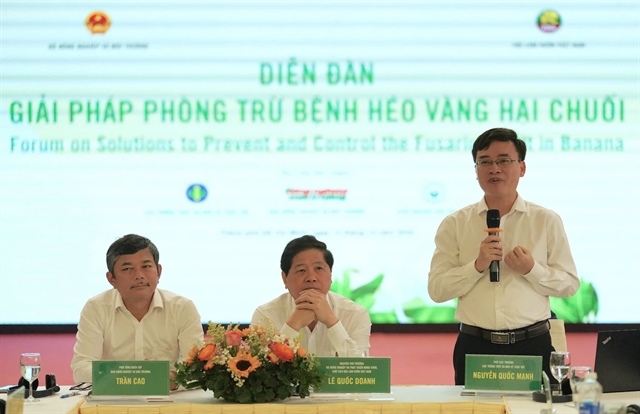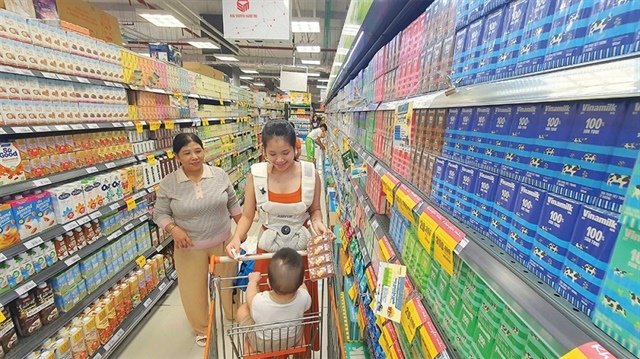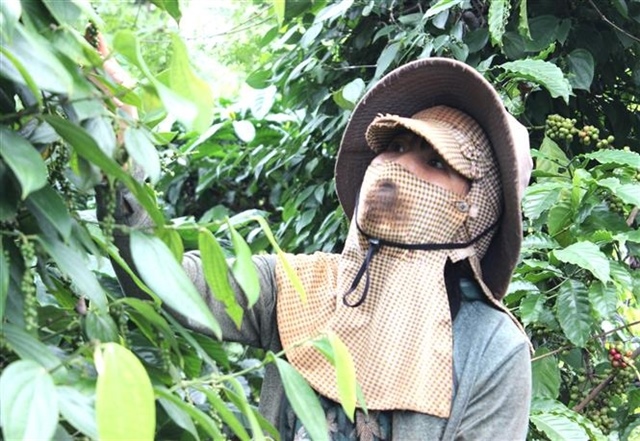Shortages blight timber businesses
Shortages blight timber businesses
While Chinese enterprises have been buying wood and timber from Vietnam, local businesses are beginning to struggle from a shortage of production materials, leading some to argue for stricter control measures and higher export tax rates

Thanh Thanh Dat Co., Ltd. is urgently manufacturing its goods to serve the current year-end orders, but a lack of raw materials may interrupt the company’s production and cause delays. “We can’t buy raw materials as Chinese companies are buying them off, pushing prices up,” said general director Tran Quang Luan.
Timber from local forests has been in huge demand since more Chinese businesses joined the game. The domestic demand for consumption and export processing is about 31 million cubic metres a year, but the domestic supply sits at only about 23 million. The rest must be imported, according to the Association of Vietnam Timber and Forest Products (VIFOREST).
China, one of the three largest timber export markets of Vietnam after the US and Japan, has seen its turnover increase from about $1 billion in 2018 to over $1.2 billion in 2019, with marginal decreases in 2020. However, the structure of exports from Vietnam to this market has changed, with logs and sawn timber decreasing sharply, while exports of woodchips spiked.
As Vietnamese manufacturers are both buying raw materials and selling products from and to China, they are feeling the double impact of Chinese enterprises. China is Vietnam’s main plywood import market, but it is also the world’s leading plywood supplier, accounting for over 30 per cent of the global market in both volume and value, and a direct competitor to Vietnam.
With a lack of input materials for exporters, the situation looks gloomy. Vu Quang Huy, head of VIFOREST’s Plywood Division, said that the price of peeled boards has increased by 10-15 per cent since last October, but businesses cannot increase their selling prices because the export prices are fixed around 3-5 months before the orders are fulfilled. Peeled plywood accounts for 85 per cent of the input materials for plywood production.
Chinese traders buy peeled boards made of acacia and whitewood all year round, in addition to boards made from rubberwood that are bought during May-October. “That is the reason why the local industry fell into a shortage of raw materials,” Huy said.
From a country that only accounted for about one per cent of the world’s plywood export share in 2015, Vietnam now covers 5 per cent of the total export share, ranking fifth in the world. In 2020, Vietnam exported 2.09 million cu.m of plywood, bringing in nearly $660 million. But the country also had to spend about $227 million to import peeled boards and plywood.
However, increasingly Chinese enterprises are beginning to dominate Vietnam’s timber plantation market, as they are setting up factories and purchasing bases for materials. In the Central Highlands region, the raw material area of rubberwood, acacia, and melaleuca of Vietnam, the Plywood Division recorded that about 90 per cent of harvested materials were sold to Chinese enterprises.
China’s thirst for materials could bring jobs and money to locals and forest growers in raw material areas in Vietnam. But it also aggravates the shortage of raw materials for production and processing. In 2020, Vietnam spent about $2.55 billion to import wood and timber, according to non-profit organisation Forest Trends.
Despite massive purchases in Vietnam, all wood production lines are established in China, where logging is strictly restricted to conserve forests as the northern and western regions of China suffer from drought.
For many years, Vietnam’s government has been striving to create sustainable sources of wood and timber materials. However, analysts said that policies are not strong enough to create a sustainable source of raw materials for deep processing. The fact that the government supports businesses and people to develop large forests, while imposing a 10-per-cent tax on the export of peeled boards, has contributed to increased competitiveness with Chinese groups.
New price adjustments for the export of peeled boards and plywood could impose a minimum free on board price of up to $200 per cu.m, which VIFOREST believed is an effective solution.
The organisation also proposes to increase the export tax on peeled plywood to 25 per cent, equivalent to sawn timber products. VIFOREST has also called for authorised agencies to strictly control the origin of exported boards to protect material sources for domestic production.


























